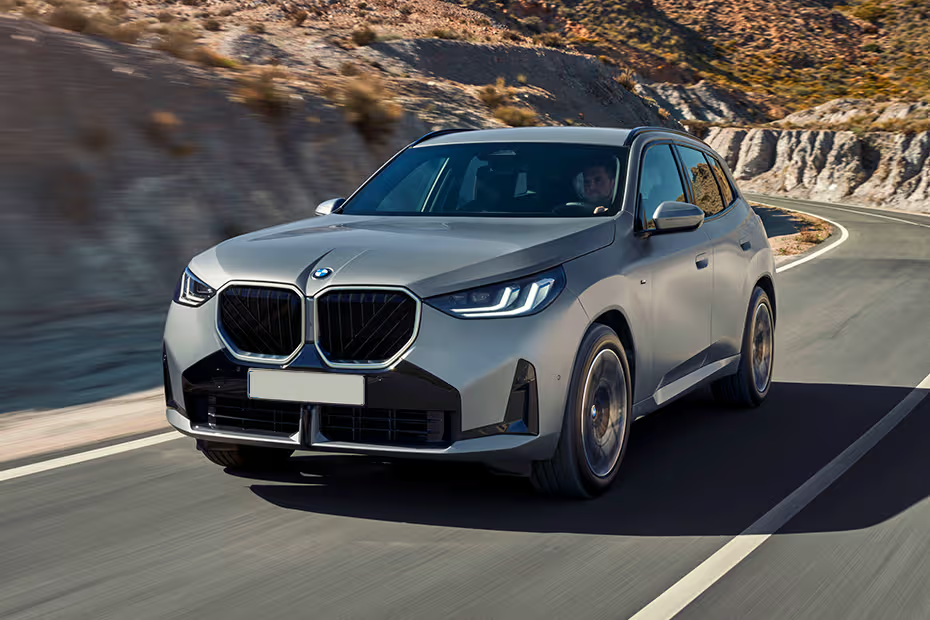It’s been quite the journey for the BMW X3. What started as a slightly awkward experiment in the early 2000s – a sort of 3 Series on stilts with questionable brakes and a confused design – has evolved into one of BMW’s most popular models globally. The second and third generations progressively sharpened the formula, with meaningful gains in driving dynamics, cabin comfort, and styling maturity. And now, with this 2025 iteration, BMW isn’t just evolving the X3. It’s repositioning it.
This fourth-gen X3 is no longer content being “the driver’s SUV.” It wants to be the complete package – a luxury crossover that doesn’t just go fast and corner well, but also understands you, talks to your phone, and flashes a light show every time you get within ten feet of it. Yes, this is the techiest X3 yet, and it wears that identity with conviction.
Design
The design evolution is subtle in profile but quite assertive in detail. While the overall proportions are more significant than before – the new X3 is taller, wider, and longer – it doesn’t feel bloated. If anything, the taut surfacing and clean shoulder lines help mask its expanded footprint. From the rear, the redesigned tail-lamps abandon the previous generation’s plier-like shape for sleeker, arrow-style units that look far more cohesive. The front end is dominated by BMW’s now-familiar illuminated kidney grille. It glows when you approach, which might sound excessive on paper, but in person, it works rather well – especially in low light, where it adds some welcome theatre.
The adaptive LED headlamps feature the signature blue detailing once associated with BMW’s Laser Light system. And here’s a quick bit of trivia – the Laser Light branding has quietly disappeared from BMW’s catalogue, though the underlying tech continues to evolve in a similar fashion. So while you may not get to say “My car has laser beams for headlights” at dinner parties anymore, you’ll still get the benefit of that crisp, high-range illumination when driving at night.
As you step into the cabin, the transformation is even more pronounced. BMW has gone all in on futuristic minimalism, but not at the cost of perceived luxury. The layout is clean and driver-focused, as always, but now more layered – both in its material choices and its light play. Ambient lighting no longer lives quietly in the background. It reacts. It pulses. It glows red when you switch on the hazard lights. It shifts to a blue-red hue in Sport mode. It warns you with flashes if you attempt to open a door into oncoming traffic, even applying subtle resistance to stop you.
This is ambient lighting with an opinion.
BMW has also introduced a new fabric mesh trim on the dashboard and door cards – a textured, layered surface that feels premium and looks contemporary. It’s a refreshing shift away from the gloss wood and piano black panels we’ve been conditioned to expect in this segment. However, keeping it spotless in India’s dusty climate might require more diligence than usual.
The tech-heavy narrative continues with BMW’s new OS9 interface, spread across a wide curved display that houses both the digital cluster and the central touchscreen. It’s intuitive once you find your bearings, but it does bury some commonly-used functions – like air conditioning controls – a little deeper in the menu structure than necessary. The temperature toggles remain easily accessible, but changing fan speed or switching the system on or off requires a few extra taps. That said, it’s a quick system, with crisp graphics and no noticeable lag.
Tech showpieces are aplenty. The augmented reality navigation system projects turn-by-turn prompts over a live front camera feed, showing you exactly which lane to take at a junction or exit. The 360-degree camera setup can be accessed remotely via your phone and even records up to 30 seconds of footage before and after an impact while parked – handy in crowded parking lots or unpredictable street-side situations. There’s a full-colour heads-up display, gesture controls, and a ‘Reversing Assistant’ that memorises your last 50 metres of movement and can autonomously retrace them if needed.
What’s perhaps more impressive is how these features integrate seamlessly into daily driving. You’re not left grappling with them. Once set up, they fade into the background, doing their job without fuss.
